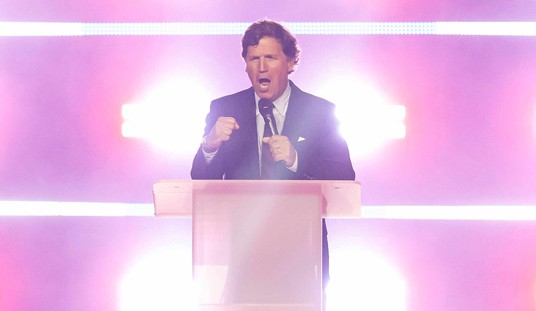In “Traveling Without Seeing,” Frank Bruni of the New York Times visits fellow Timesman Thomas Friedman’s home away from home, finds himself longing for America, and thus begins his psychodrama. (Link safe; goes to the Brothers Judd blog):
SHANGHAI — I’m half a world from home, in a city I’ve never explored, with fresh sights and sounds around every corner. And what am I doing?
I’m watching exactly the kind of television program I might watch in my Manhattan apartment.
Before I left New York, I downloaded a season of “The Wire,” in case I wanted to binge, in case I needed the comfort. It’s on my iPad with a slew of books I’m sure to find gripping, a bunch of the music I like best, issues of favorite magazines: a portable trove of the tried and true, guaranteed to insulate me from the strange and new.
I force myself to quit “The Wire” after about 20 minutes and I venture into the streets, because Baltimore’s drug dealers will wait and Shanghai’s soup dumplings won’t. But I’m haunted by how tempting it was to stay put, by how easily a person these days can travel the globe, and travel through life, in a thoroughly customized cocoon.
I’m not talking about the chain hotels or chain restaurants that we’ve long had and that somehow manage to be identical from time zone to time zone, language to language: carbon-copy refuges for unadventurous souls and stomachs.
I’m talking about our hard drives, our wired ways, “the cloud” and all of that. I’m talking about our unprecedented ability to tote around and dwell in a snugly tailored reality of our own creation, a monochromatic gallery of our own curation.
When Bruni writes about “how easily a person these days can travel the globe, and travel through life, in a thoroughly customized cocoon,” I wonder if he realizes how that line cuts both ways, tacitly insulting both the Times’ journalists, and in particular, the paper’s readership, all of whom rely upon the paper to keep them trapped inside the cozy liberal cocoon?
Polipundit collated the following two articles on the cocoon back in 2003; the first was written by J. Peter Mulhern in the Washington Weekly in early 2001, and coined the phrase:
The press never lets Republicans forget their political vulnerabilities. Their opponent’s playbook is splashed all over the editorial pages of the Washington Post and the New York Times. Sometimes, even in politics, forewarned is forearmed.
Washington Democrats, saturated as they are in the culture of the left, are forever setting themselves up for sucker punches. The Post and the Times aren’t going to tell them where they’re likely to get into trouble and they frequently can’t figure it out for themselves.
Bill Clinton’s ill-fated attempt to make the military embrace homosexuality is a classic example. His administration was caught by surprise when that attempt generated a powerful political backlash. It never occurred to the Democrats that many people don’t accept homosexuality as a morally neutral life-style choice or that many people view the military as a bastion of traditional virtues.
The Bush administration has never had a similar debacle, in part because competence has returned to the White House, but also because Republicans know from bitter experience who’s going to pummel them, what they will be pummeled about, when they will be pummeled and where the pummeling will take place.
A couple of years later, Mickey Kaus added:
There are cocoons on both sides, but the people in the Republican cocoon tend to see themselves as an embattled minority (even when they’re not) while those in the Democratic cocoon tend to believe they have the tides of history and populism on their side, even when they don’t. … The best example of this is the way liberals always seem to think a union resurgence is around the corner, because they read reports all year about labor’s various campaigns and occasional victories. Then, when it turns out union membership has actually declined, it comes as a shock. …
There may be a difference here, too, between the Washington liberal cocoon and the New York liberal cocoon. New York liberals, as I discovered when campaigning in Manhattan in 1984 for South Carolina’s Sen. Ernest Hollings, tend to be aloof and isolated. They think the rest of America is populated by hopeless fundamentalist redneck hicks. As a result, they have a somewhat more realistic view of the prospects for a liberal tidal wave sweeping Democrats into power. The Washington cocoon is more respectful of the rest of the country, which, oddly, makes it more easily deluded. Washington’s liberal cocooners tend to convince themselves the nation’s filled with people like them, who care intensely about the Brady Bill and the liability limits in the patients bill of rights, and don’t much mind if there are gays in the military. Then, unlike snobby New York liberals, they’re rudely surprised. …
Barack Obama has spent his entire life inside the cocoon, which helps to explain his intense xenophobia, radicalism, racialism, the anthropological tone he frequently employs when talking about the suburbs and the Red States, and his recalcitrance when it comes to new ideas. And all he needs to do is to open the Times or watch MSNBC and have his bias confirmed by the cocoon.
Though it does offer quite a distorted view of reality, the cocoon is a remarkable feedback loop — at least until the money runs out. (See also: Mounting federal deficit, Detroit, and the New York Times itself.)










Join the conversation as a VIP Member